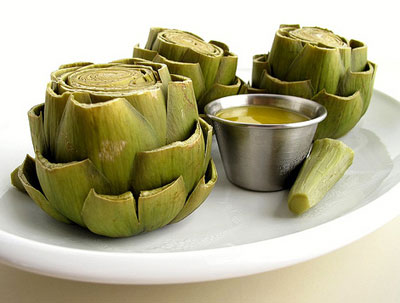 As with many good things, a cherished recipe resulted from an accident.
As with many good things, a cherished recipe resulted from an accident.
My wife wanted an omelet for breakfast and we had only one egg in the refrigerator. That egg was an especially good, farmers' market egg, but it did not have a companion and my wife was used to having a two-egg omelet.
Many solutions came to mind.
Go to the market to buy more. That seemed like too much trouble with a cup of coffee already brewed and waiting on the dining room table next to the Sunday New York Times. Use a lot of milk as "filler." But the resulting omelet would have been more like a custard than what my wife likes, a very firm cooked egg.
So, I did the only thing any guy would do in the circumstances. I punted.
If I was short an egg, well, I'd compensate with a lot more filling, hoping my wife would be distracted by all the goodies so she wouldn't notice the paucity of "egg."

 I discovered the love of cooking at age 7. Since that first cake that I baked for my dad’s birthday, I have always cooked using ingredients found in the kitchen. I can probably count on one hand how many times I created something from a box or a mix and never really thought there was any other way.
I discovered the love of cooking at age 7. Since that first cake that I baked for my dad’s birthday, I have always cooked using ingredients found in the kitchen. I can probably count on one hand how many times I created something from a box or a mix and never really thought there was any other way. Most people look at an artichoke and think: "What do I do with this?"
But artichokes only look intimidating, they're actually easy to prepare
once you know how. Originally from the Mediterranean, artichokes have a
history that dates back to Roman times. There are countless cultivated
varieties, especially in Italy, where artichokes are enjoyed in many
different preparations including raw salads, stuffed and baked, steamed,
grilled, etc. In the States we have just two varieties: the large globe
and small baby. The simplest way to prepare artichokes is steaming. Not
only is it easy to do, the method also retains the subtle flavors that
make artichokes so revered.
Most people look at an artichoke and think: "What do I do with this?"
But artichokes only look intimidating, they're actually easy to prepare
once you know how. Originally from the Mediterranean, artichokes have a
history that dates back to Roman times. There are countless cultivated
varieties, especially in Italy, where artichokes are enjoyed in many
different preparations including raw salads, stuffed and baked, steamed,
grilled, etc. In the States we have just two varieties: the large globe
and small baby. The simplest way to prepare artichokes is steaming. Not
only is it easy to do, the method also retains the subtle flavors that
make artichokes so revered. Years ago when I was a round nugget of a child running around in terry-cloth shorts I had a book I read to myself many times over. It involved some Amphibian or Owl With Shoes who lived inside a mushroom or hollow tree. I can’t remember much of the story but the one thing that stuck in my brain was that on many occasions this anthropomorphic critter would find himself without food or drink and would simply chop an onion or think about sad things in order to create his own version of tear tea. I remember being disgusted by the thought of sipping one’s own saline tears but that didn’t freak me out as much as the things he’d think about to coax the tears out of his eyes and into the kettle.
Years ago when I was a round nugget of a child running around in terry-cloth shorts I had a book I read to myself many times over. It involved some Amphibian or Owl With Shoes who lived inside a mushroom or hollow tree. I can’t remember much of the story but the one thing that stuck in my brain was that on many occasions this anthropomorphic critter would find himself without food or drink and would simply chop an onion or think about sad things in order to create his own version of tear tea. I remember being disgusted by the thought of sipping one’s own saline tears but that didn’t freak me out as much as the things he’d think about to coax the tears out of his eyes and into the kettle. Cioppino is said to have originated among fishermen who made their dinners out of the fish and shellfish they couldn't sell in the morning. Although it has evolved into a pricey item on upscale menus, at heart cioppino is comfort food.
Cioppino is said to have originated among fishermen who made their dinners out of the fish and shellfish they couldn't sell in the morning. Although it has evolved into a pricey item on upscale menus, at heart cioppino is comfort food.
